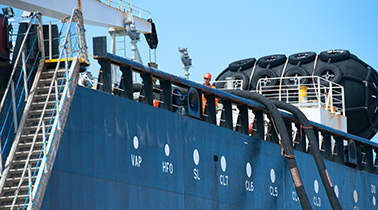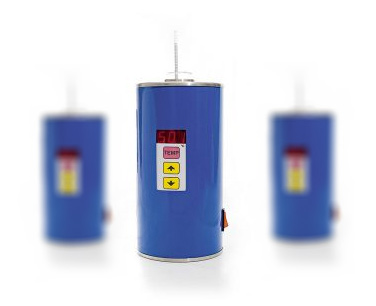Mediterranean SECA
The designation of the Mediterranean as an emission control area means that, starting May 1, 2025, ships will be mandated to use marine fuel with reduced sulphur content. The permissible sulphur content in marine fuels will be reduced from the current limit of 0.5% to a significantly lower level of 0.1%. This reduction is expected to prevent at least 1,000 premature deaths annually and reduce new cases of childhood asthma by approximately 2,000 each year.
Transition Problems
Regardless of which compliance route followed, HSFO remnants will affect the sulphur concentration measurements, as in most tank cleaning jobs the fuel systems are still not cleaned properly. A planned fuel treatment is NECESSARY when changing fuel types, as non-compliance and long-term damage to the engine are at stake.
| Icon |
Sludge & Sediments in Fuel Tanks |
Fuel tanks using HSFO are always contaminated by an accumulated layer of wasted, unpumpable fuel. This can reach up to 8% of the tank’s capacity, as sludge and sediments have formed over time. Before changing fuel types, these need to be removed.
| Icon |
Fuel System & Filters Clogging |
During the switchover process, with the remnants of HSFO still in the fuel system, two different types of fuels burning inside the engine cylinder may cause the asphalt of the heavy fuel to precipitate as heavy sludge. Chunks of the sludge and sediments within the fuel network and tanks can disband and clog the fuel system and filters.
The Vecom Marine Solution
Vecom Marine is well prepared to assist the marine world in this unpredictable transition, offering cost-effective and reliable fuel oil treatment solutions. With a technology thoroughly tested and proven, we recommend FOT SLUDGE DISPERSANT as the ideal solution for a smooth transition.
With a unique ability to disperse the sludge, FOT SLUDGE DISPERSANT keeps the pre-combustion system clean and maintenance free. This efficient and reliable treatment disperses sludge and breaks water in oil emulsions, making the residual fuel more homogeneous for combustion improvement. This product stabilizes fuel blends, stopping stratification and reducing compatibility issues and can be used to reduce and disperse existing sludge from bunker tanks prior to dry-docking.
Tank cleaning in motion
Sludge is dispersed into your fuel during a period of gentle clean up. Residues in the bottom and sides are close to none leaving the manual work an easy affair. Fuel tanks and fuel system are cleaned over time during vessel operation.
Initial 3 steps
- An initial manual tank cleaning may be necessary depending on the accumulation of remnants to avoid sludge overflow.
- Dose FOT SLUDGE DISPERSANT directly into the bunker tank prior to bunkering. During the bunkering process, the product will self-disperse into the remaining fuel and the new bunker fuel.
- Perform treatment twice prior to fuel change and inspect condition of tanks.
Why prepare now?
- External cleaning operation teams are expensive and will be in high demand.
- Vessel crews may be unable to perform the necessary cleaning job to change the fuel; It is dangerous at sea, there may not be enough time to perform the cleaning job and procurement of the waste disposal services will be difficult.
- Shipyards or drydock scheduled maintenance may be further into the future.
- The fuel network will need to be diligently cleaned as clogged filters, heaters, pumps or fuel systems will result to non-compliance and long-term damage to the engine. Time and proper treatment are required to avoid sludge overflow.
- Electronic engines with high pressure piping systems such as common-rail systems, will need special attention and more time to thoroughly clean, as the transition from HSFO may have too much sulphur accumulated within due to the bigger quantity of fuel holding.



